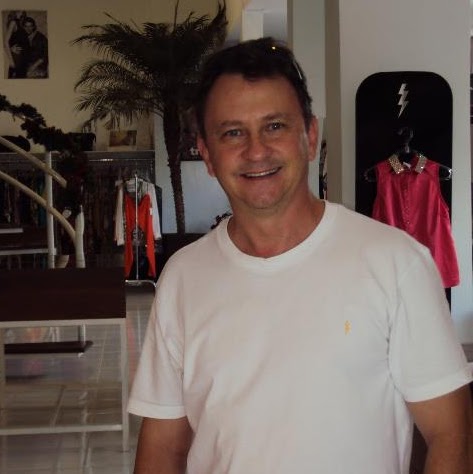Walter R Lamb
age ~62
from Savannah, GA
- Also known as:
-
- Walter Rd Lamb
- Walter R Kessler
- Walter Lambs
- Lamb Walter
- Bill Du
- Phone and address:
-
128 Blue Marlin Dr, Savannah, GA 31410
(912)8972183
Walter Lamb Phones & Addresses
- 128 Blue Marlin Dr, Savannah, GA 31410 • (912)8972183 • (912)8981062
- 205 Morgan St, Pooler, GA 31322 • (912)7487283
- Redwood City, CA
- Minooka, IL
- Bloomingdale, GA
Us Patents
-
Multiple Reflector Concentrator Solar Electric Power System
view source -
US Patent:53743172, Dec 20, 1994
-
Filed:Mar 23, 1993
-
Appl. No.:8/035914
-
Inventors:Walter Lamb - Sunnyvale CA
John Lawrence - Cupertino CA -
Assignee:Energy Systems Solar, Incorporated - Sunnyvale CA
-
International Classification:H01L 31052
H01L 31058 -
US Classification:136246
-
Abstract:Disclosed is a solar electric power system that utilizes multiple reflectors to concentrate sun light onto a panel of photovoltaic (PV) cells. The power system, consisting of multiple reflectors, mounted PV cells, and a heat dissipation component, is mounted on a tracker that keeps the system directed to the sun. A noteworthy feature of this system is its designed-in capability of being retrofitted with advanced reflectors, PV components, and heat dissipation components during the system's multi-year operating life. The common axes design feature of the system allows for low cost materials and manufacturing concepts. The system can operate on either a single or a dual axis tracker with active or passive cooling.
-
Method Of Making Passivated Antireflective Coating For Photovoltaic Cell
view source -
US Patent:50117823, Apr 30, 1991
-
Filed:Mar 31, 1989
-
Appl. No.:7/332287
-
Inventors:Walter R. Lamb - Sunnyvale CA
Darrell Griffin - Stratford CA -
Assignee:Electric Power Research Institute - Palo Alto CA
-
International Classification:H01L 3118
-
US Classification:437 2
-
Abstract:The performance of a silicon photovoltaic cell is improved while process yield is maintained by first forming doped regions in a major surface of a silicon wafer and providing electrical interconnections to the doped regions prior to thinning the wafer by etching another major surface of the wafer. A passivating antireflection layer is applied to the etched surface after the surface is precleaned. The precleaning can be by ammonia plasma applied in situ as a precursor to depositing silicon nitride as the passivation layer.
-
Method Of Forming Light-Trapping Surface For Photovoltaic Cell And Resulting Structure
view source -
US Patent:49180304, Apr 17, 1990
-
Filed:Mar 31, 1989
-
Appl. No.:7/332286
-
Inventors:Walter R. Lamb - Sunnyvale CA
John E. Lawrence - Cupertino CA -
Assignee:Electric Power Research Institute - Palo Alto CA
-
International Classification:H01L 3118
-
US Classification:437225
-
Abstract:An improved textured surface of a photovoltaic device is provided by an anisotropic etching process in which pyramidal structures are formed on a silicon surface having a (100) crystallographic orientation. An aqueous solution of an alkali metal hydroxide is heated to approximately 85. degree. C. whereupon isopropyl alcohol is added. Separated silicon wafers are immersed in the solution for approximately 45 minutes. The wafers can be agitated for a limited time in the solution, and preferably the wafers and solution are covered during the etching step. The resulting pyramids are on the order of 14 microns high and 20 microns on each side of the base. The overlap of the pyramids provides desired random locations for the pyramids.
Resumes

Walter Lamb
view sourceLocation:
United States

Walter Lamb
view sourceLocation:
United States
Name / Title
Company / Classification
Phones & Addresses
Klassy Cuts Pet Salon LLC
Animal Services
Animal Services
4700 Us Hwy 80 E, Savannah, GA 31410
(912)8974144
(912)8974144
President
ENERGY SYSTEMS - SOLAR
148 Jacinto Way, Sunnyvale, CA 94086
Myspace
Flickr

Walter Zee Lamb
view source
Walter James Lamb
view source
Walter Lamb
view source
Walter Lamb
view source
Walter Lamb
view source
Walter Lamb
view source
David Walter Lamb
view source
Walter Lamb
view sourcePlaxo

walter james lamb
view sourceopreations at VUT JUST 19 WORDS GOD OUR FATHER, WALK THROUGH MY HOUSE AND TAKE AWAY ALL MY WORRIES AND ILLNESSES; IN JESUS ' NAME. AMEN
Classmates

Walter Lamb
view sourceSchools:
Jenkins High School Jenkins KY 1972-1976
Community:
Donald Baker, Liz Tompkins, Wallace Kincer

Walter Lamb
view sourceSchools:
Three Oaks Elementary School Three Oaks MI 1969-1972, Central Elementary School Niles MI 1973-1977, Ring Lardner Middle School Niles MI 1976-1979
Community:
Paul Singbusch, Joann Hill

Walter Lamb
view sourceSchools:
Hoxie High School Hoxie AR 1954-1958
Community:
Linda Spargo, Ronnie Shaw, Tammy Schmidt, Jackie Lawson

Walter Lamb
view sourceSchools:
Coral Reef High School Miami FL 2002-2006
Community:
Daphne Gaetjens, Ashley Eaker, Ruben Maull

Walter Lamb
view sourceSchools:
Pathfinder Regional Vocational High School Palmer MA 1997-2001
Community:
Shasta Morse, Shawn Hawkins, Peter Stromberg, Kurt Batchelder, Benjamin Delisle, Abe Marciniec, Joshua Davis, Christopher Gaumond, Jennifer Labrecque, Trysten Camerota

Walter Lamb, Farr Academy...
view source
Farr Academy, Cambridge, ...
view sourceGraduates:
Walter Lamb (1974-1978),
Jennifer Thomas (1978-1982),
Edward Lux (1972-1976),
Dan Pedicini (1998-2002),
Michael Ingram (1983-1987)
Jennifer Thomas (1978-1982),
Edward Lux (1972-1976),
Dan Pedicini (1998-2002),
Michael Ingram (1983-1987)

Three Oaks Elementary Sch...
view sourceGraduates:
Kerry Zebell (2002-2006),
Walter Lamb (1969-1972),
Billy De Rossi (1985-1989),
Amy Simic (1973-1975)
Walter Lamb (1969-1972),
Billy De Rossi (1985-1989),
Amy Simic (1973-1975)
Googleplus

Walter Lamb

Walter Lamb

Walter Lamb

Walter Lamb

Walter Lamb

Walter Lamb

Walter Lamb

Walter Lamb
Youtube
Get Report for Walter R Lamb from Savannah, GA, age ~62

















